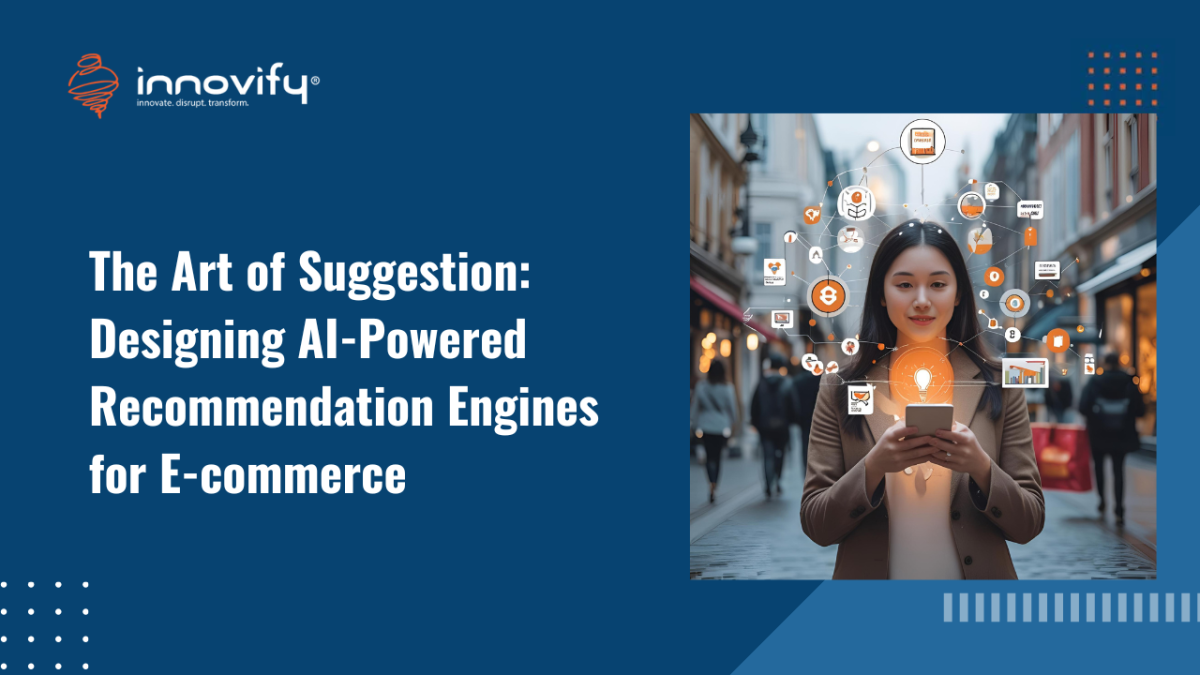AI/ML
The Art of Suggestion: Designing AI-Powered Recommendation Engines for E-commerce
Designing AI-powered recommendation engines for e-commerce product discovery
In the crowded digital marketplace, consumer attention is a precious commodity. E-commerce platforms, with their vast catalogs of products, face the constant challenge of helping customers find exactly what they want, and perhaps more importantly, what they didn’t even know they wanted. While traditional search functions serve a purpose, true product discovery goes beyond keywords. It requires anticipating customer needs and interests, subtly guiding them towards relevant items. This is the domain of AI-powered recommendation engines, and mastering the art of designing AI-powered recommendation engines for e-commerce product discovery is crucial for driving sales, enhancing customer satisfaction, and building lasting loyalty.
Beyond Basic Search: The Discovery Challenge
A customer visiting an e-commerce site might know precisely what they’re looking for, using the search bar to find a specific item. But often, the shopping journey is more exploratory. They might be Browse for gift ideas, looking for complementary accessories, or simply seeking inspiration. In these scenarios, a static, unpersonalized product display can quickly lead to decision fatigue or abandonment. Without intelligent guidance, many valuable products remain undiscovered, and customers may leave the site without finding anything appealing.
The Science Behind Smart Recommendations
AI-powered recommendation engines are sophisticated systems that learn from vast amounts of data to predict user preferences and suggest relevant items. They leverage various machine learning techniques, often in combination:
- Collaborative Filtering: This is a popular approach where the system recommends items based on the preferences of similar users. If User A and User B have similar tastes (e.g., they both bought products X and Y), and User A also bought product Z, then the system might recommend Z to User B.
- Content-Based Filtering: This method recommends items similar to those a user has liked in the past. If a user frequently buys science fiction books, the system will suggest other science fiction books based on genre, author, or themes.
- Hybrid Models: The most effective recommendation engines often combine collaborative and content-based approaches to overcome the limitations of each. For instance, a hybrid model can address the “cold start” problem (when there’s insufficient data for new users or new products) by using content attributes until enough behavioral data is collected.
- Deep Learning and Embeddings: Advanced models use neural networks to create “embeddings” – numerical representations of users and items in a high-dimensional space. The closer the user and item embeddings are, the more relevant the recommendation. This allows for highly nuanced and context-aware suggestions.
Key Considerations in Designing AI-Powered Recommendation Engines
Designing AI-powered recommendation engines for e-commerce product discovery involves several critical considerations:
- Data Collection and Quality: The engine’s intelligence relies on rich, clean data about user interactions (clicks, views, purchases, search queries, ratings), product attributes (category, brand, price, description, images), and even external factors like trending items or seasonality.
- Real-time Responsiveness: Recommendations should adapt instantly to a user’s current Browse session. If a user adds a specific item to their cart, the recommendations should immediately shift to complementary products.
- Diversity and Serendipity: While relevance is key, too much predictability can lead to a “filter bubble.” A good engine balances accuracy with introducing new, unexpected items that a user might not have found otherwise, fostering true discovery.
- Explainability: In some cases, showing why a product was recommended can build trust and encourage purchases (e.g., “Because you bought X, we thought you’d like Y”).
- A/B Testing and Optimization: Continuous testing of different algorithms, recommendation placements, and display formats is crucial for ongoing improvement and maximizing key performance indicators (KPIs) like conversion rates, average order value (AOV), and customer lifetime value (CLV).
By meticulously designing these engines, e-commerce businesses can transform the customer experience from a passive search into an engaging, personalized journey of discovery, ultimately leading to higher sales and a more loyal customer base.
Ready to enhance product discovery and boost sales with AI-powered recommendations? Book a call with Innovify today.




